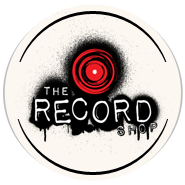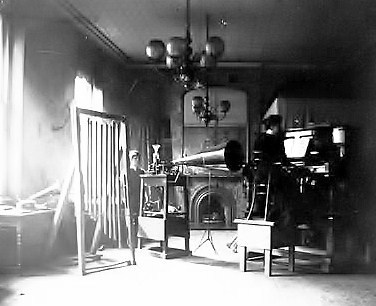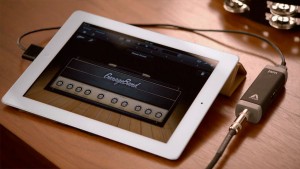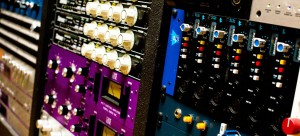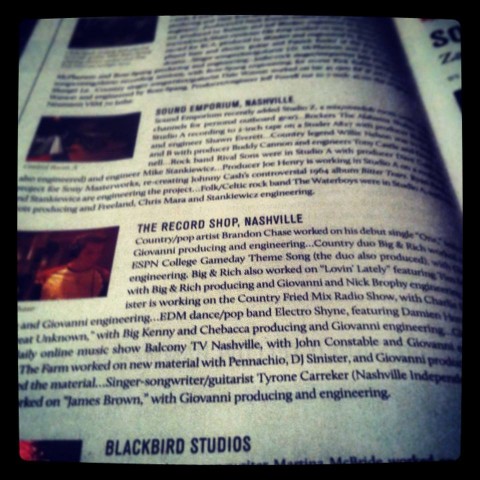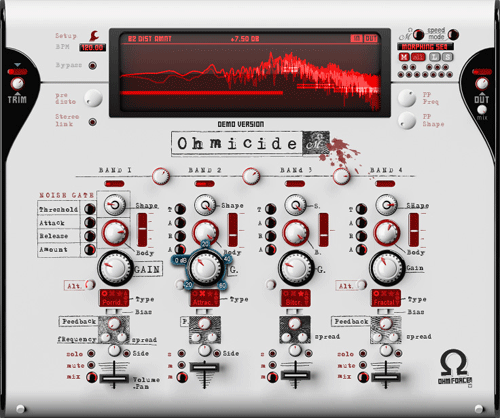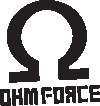


“Wow! Look at all those knobs.” As an audio engineer that is probably the most common phrase I hear uttered by an artist the first time they step foot in a studio. In an effort to figure out what all these fancy buttons do ;) , we thought it would be fun to introduce a new series on For The Record called “Behind The Gear.” The Record Shop is home to a unique collection of modern and vintage equipment. Our audio arsenal was carefully selected to offer a wide range of sonic colors and textures. Each week we will offer an inside look at a different piece of equipment we use here at The Record Shop. We will take a look at the history of the piece, outline the various ways it is utilized during a session and share some unique tricks that we use to shape the tone of a recording.
This week, we’ll start the series off by offering some basic information on each category we will be covering: Microphones, Pre-Amps, Compressors, Equalizers, and Plug-Ins. For those of you familiar with the basic function of these devices, we invite you to join us next week when we take a look at the Empirical Labs Distressor, a studio legend that reigns as one of the most versitle compressor/limiters on the market. For the rest of you fine folks, read on my friends…….
Microphone
If your reading this, I’m sure you don’t need a proper definition of what these things do, but for the sake of covering our bases, we’ll turn to Wikipedia. “A microphone is an acoustic-to-electric transducer that converts sound into an electrical signal.” Sounds simple enough, but what makes our job so fun is that each microphone does this differently and, in turn produces drastically different results. There are three different categories of microphones that are most commonly used in the recording studio: Dynamic, Condenser, and Ribbon. A dynamic microphone is work horse device, capable of reproducing loud sound sources as well as those with a powerful attack (such as guitars, kick drum, and snare drum). A condenser microphone is a more delicate device, designed to react sensitively to its sound source, offering a more defined sound on things such as drum overheads, acoustic instruments, and vocals) A ribbon microphone offers a unique tone due to the natural lack of high end frequency response that the ribbon reproduces. Ribbons have become very popular as a method to achieve a “vintage” vibe on modern, digital recordings. For more detailed information visit Wikipedia’s “Microphone” page….
Pre-Amps
A Pre-Amplifier (pre-amp) is a device that takes a low level signal from a microphone, or instrument, and boosts it to a line level signal that can be recorded. As with microphones, every pre-amp offers its own, unique tonal characteristics. There are two types of pre-amps commonly used in the recording environment: Tube and Solid State. As the name suggests, tube pre-amps utilize tube components to amplify the sound, offering a “warm” tone and a subtle distortion that is preferred in many applications. A solid state pre-amp does not make use of tube components and generally offers a cleaner, more transparent tone. Within these two types of pre-amps are countless brands and models that all have their own sonic flavor. For more detailed information, visit Wikioedia’s “Pre-Amplifier” page….
Compressor
A compressor is an audio device that effects the range between the loudest and quietest parts of a sound source (known as dynamic range) A compressor accomplishes this by lowering the volume of the sound source when it passes above the volume threshold that is set by the user. The amount of compression, and the reaction time of the device, is set by the ratio, attack, and release knobs. Just like pre-amps, compressors are also built with either solid state or tube components. Compressors can be used for a variety of applications, from subtly taming dynamics, to extreme “pumping” that can create intriguing rhythmic effects. For more detailed information, visit Wikipedia’s “Audio Compressor” page…
Equalizer
An equalizer adjusts the balance between frequencies in an audio signal. It allows us the ability to “shape” the frequency range of a sound in order to enhance its qualities, fit it into a mix, etc. There are two main types of EQ’s used in the studio environment: Parametric and Graphic. A Parametric EQ offers a variable frequency selection on multiple frequency “bands” (ranges) and a variable “Q” (range of effected frequency). This allows us the flexibility to hone on the desired frequency and effect it accordingly. Graphic EQ’s have fixed frequency and q selection, often based on frequency “octaves” to offer a natural, musical response. For more detailed information, visit Wikipedia’s “Equalization” page…
Plug-In’s
Plug In’s are used in digital recording to emulate the function of analog equipment. While, it can be argued that software can never take the place audio moving through actual components (and I agree!) software plug-ins have continued to grow in their sonic offering and can be very useful in the modern recording environment in many situations. There are endless options when it comes to plug-ins. The market is flooded with new, innovative tools for manipulating audio. A recent development in plug in technology is what is referred to as “emulation plug-ins” These software devices are built off of algorithms developed through the testing of actual analog gear. Through this process, developers have been able to create plug-ins that embrace the tonal qualities of a specific type of gear. This is a very exciting technology that we have found very useful in Universal Audio’s, UAD Plugs. You can learn more about Plug-ins by visiting this interesting article at Delicious Audio…
Well, now you are ready to venture “Behind The Gear” at The Record Shop. Check back next week for our first installment, highlighting the Emperical Labs’ Distressor. In the meantime, feel free to drop by our Gear Page for more information on our vast array of equipment.
As always, we love to hear feedback on our articles. If this was helpful, or a complete waste of your time, let us know! We love making new friends as well. Feel free to drop by our page on Facebook and sign up for our monthly newsletter to receive valuable resources and updates on the studio. Thanks for dropping by For The Record. Catch you next week!
-Giovanni
Therecordshopnashville.com
